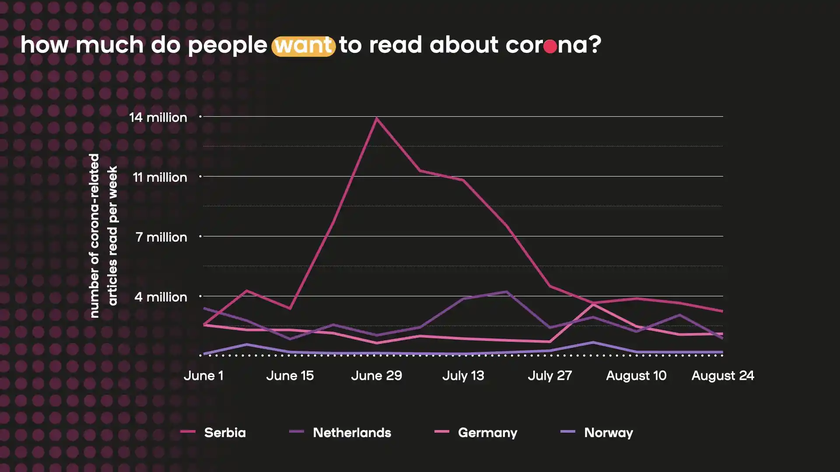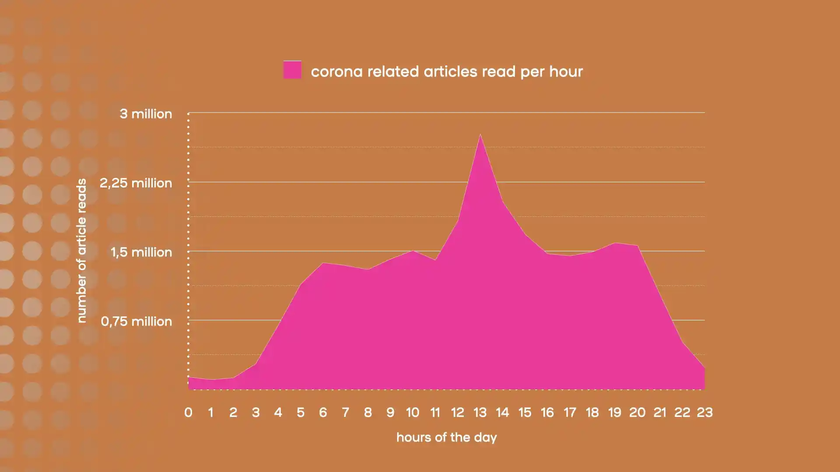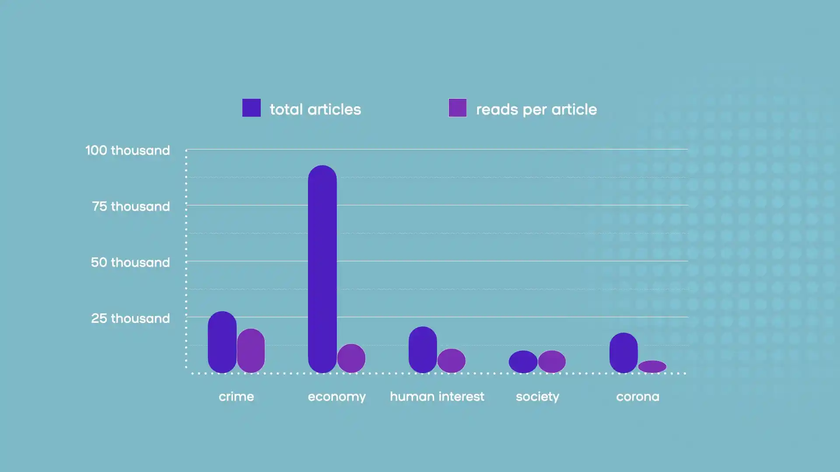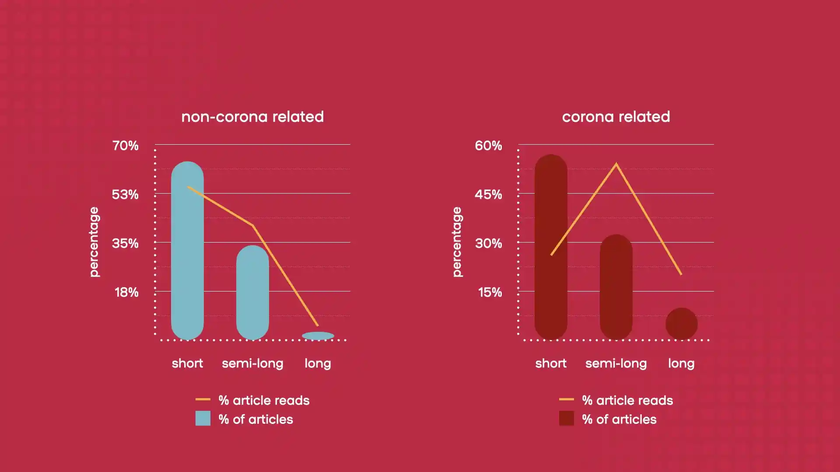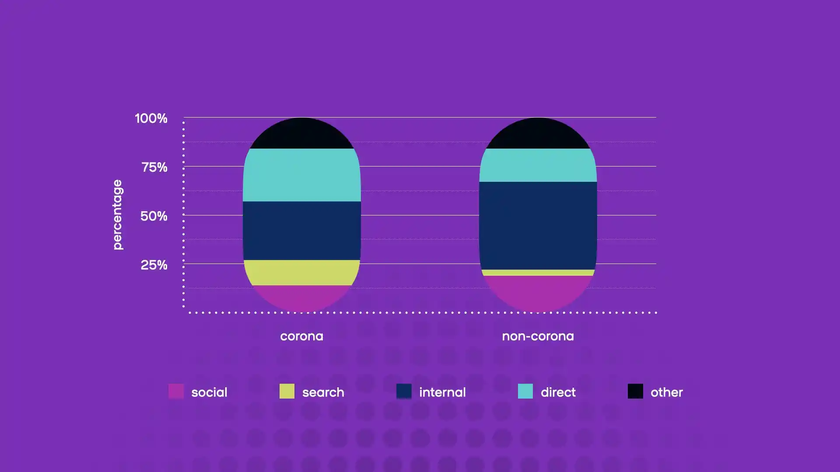September 2020. Our expectations at the start of this year were probably very different from how things have actually turned out. We've been forced to change the way we work, shop, exercise, and interact with others. And, as a side effect, the way people consume news changed as well. But how long should we expect that side effect to last? Were things starting to return to normal this summer, after the initial societal upheaval became normalised or the lockdowns eased? Is the virus still at the top of everyone’s mind? Do people even want to read about the coronavirus anymore?
A couple of months ago we conducted a comprehensive study on audience behaviour related to stories on corona. This is the follow-up and we hope to provide some more insight to the following questions:
- How do people consume news now?
- What are their preferences when it comes to virus-related content?
- What has caused these preferences to change?
- How can you anticipate, and answer to, users’ news needs?
But first, a little refresher
In our previous data study on corona we researched audience behaviour in selected countries during the first 4 months of the year. Back then, there was no attention dip on corona, as people read about it consistently throughout the day. Search played a big role in how people found the news they were looking for, and posts about the virus on social media were not a big hit.

